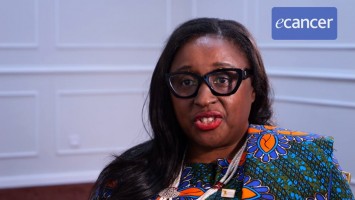EADO Congress 2015
What is the real role of UV in melanoma?
Dr Amaya Viros - The University of Manchester, Manchester, UK
It’s intriguing to think about the process of oncogenesis in melanoma. You have been credited with a pretty controversial statement – the only cause is UV. That sounds amazing.
The only environmental risk factor is ultraviolet light, however, the relationship is not linear. If you compare the incidence of non-melanoma skin cancers in relationship to light it’s pretty much a very linear relationship, however, the interaction between melanoma and UV light is much more complex and multi-faceted. This is because we pack many types of exposure to ultraviolet light and many types of melanoma within the same bag but we actually are trying to aim to dissect how different patterns of UV and different ages of exposure lead to different melanomas.
In view of our love affair with sunshine, this is very important. What are the candidates for ultraviolet causing oncogenesis?
Ultraviolet light has many effects on the cell. Firstly, ultraviolet light B, which is a component of the total ultraviolet emissions, damages the DNA directly causing certain mutations that we can actually detect when we sequence tumours. Ultraviolet A, which is also a huge component in the phototherapy dermatology department or in sunlight, can also affect our cellular compartment because they lead to a reactive oxygen species and these eventually can also lead to DNA damage. Apart from the different wavelengths they’re different patterns so I’m sure you’re thinking about the British tourist who goes from a young age to Majorca, sun exposes, gets burned and returns to England and gets melanoma before 55 and has a high risk factor and has a very fair complexion. This is certainly the predominant type one has in mind when one thinks of UV in melanoma, however, I’d like to say that the death rates amongst chronically sun-exposed people who are of advanced age in Southern Europe are pretty high as well. So, for example, the golfer who has been chronically sun exposed or the South European farmer who works chronically in the sunlight also have significant contribution of UV light to their melanoma. So we’re trying to see how these two patterns differ.
What patterns are emerging about UV damage, then, that might give you some clues?
There is some preliminary data showing that when you have a melanoma that’s led by the BRAF mutation, which is the most common mutation in cutaneous melanoma, this oncogene usually arises in patients who are younger and who have a fair complexion so they’re usually redheads or the British phenotype. So when this melanoma arises after UV light we see that there’s a very specific selection in our mouse models. We use mouse work to perfectly mimic a very closed interaction between UV and damaged melanocyte to actually drive melanoma progression, so it’s a very unique thing. In reality in humans it’s much more complex because we all have different patterns of exposure, jobs, germline risk etc. But in our distinct hands we show that p53 mutations are incurred by UV light and actually co-operate with BRAF to promote melanoma and we’re endeavouring to also find out how UV interacts with other oncogenes.
Are these mechanisms similar to the mechanisms in non-melanoma skin cancer?
They are, so p53 is a main target of non-melanoma skin cancer indeed. So that is in common, that’s a very good question and food for thought.
Moving on, though, what to do about this? Clearly there’s a preventive message that we’ve known for many years, of course, but what do you think can and should be done about all of this?
Because this relationship between UV and melanoma is not direct, the Greek farmer versus the British tourist pattern of sun exposure in lifespan getting melanoma, it’s very difficult to tailor one single advice for all the population which is why it’s so important to actually dissect the mechanisms underlying each subtype of melanoma and its relationship to UV. So we have shown that sunscreen application that’s broad spectrum, so high UV-B of SPF50 and high UV-A, is able to deter the incidence of melanoma, so to delay that incidence in mice. There is also epidemiological data showing that sunscreen is able to reduce the incidence of melanoma. So that’s the most important thing, to validate the campaigns that have been led by many public governments – Australia, UK – advising on the use of sunscreen. It is now proven, so one should certainly use sunscreen. And because that protection is not complete then I refer to the campaign that is Slip Slap Slop, where you have to also add additional things apart from sunscreen, for example hats and eye protection and, of course, keep away from the main UV radiation during the worst hours of the day. But they are certainly very good programmes of prevention.
On the scientific front, what hope is there of really getting to grips with the etiology and perhaps finding an intervention of some kind?
I think the hopes are very high and we’re working on it.
When you say very high, it’s nowhere near the clinic yet.
We have many models to test how UV can interact with melanoma in different settings. We can investigate patterns, wavelengths, all those things are coming together. So once we have that we will be able to inform public health campaigns and also prevention strategies, of course, following from that. So there’s great hope but a lot of work to be done.
And the bottom line for doctors, obviously they might be able to give preventive advice if they’re consulted, how would you sum up the bottom line message for doctors listening?
Don’t sunburn at any point in your life.
Spread the word about the dangers, as well.
And spread the word, yes. And there is plenty of evidence now supporting that statement.








